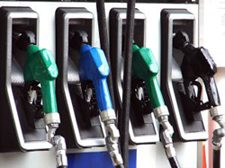Testing the Accuracy of U.S. Retail Biodiesel Blends

A study by Christopher Reddy, et al., used radiocarbon dating to determine the biodiesel blending percentages of retail biodiesel blends in the U.S. Their analysis of more than 20 biodiesel blends revealed that inaccurate blending happens frequently.
Reddy and company used their validated radiocarbon-based method to analyze a variety of bioblends acquired in 2006 from retailers in Minnesota, Indiana, Massachusetts, and Tennessee. Based on their results, only one out of 10 retail samples passed the specifications that the U.S. Department of Defense requires for blends that are 20% biodiesel (B20 blends).
Radiocarbon Dating Biodiesel
According to Reddy, the radiocarbon-based biodiesel blend determination poses some important advantages over existing methods, including the European Standard method EN 14078, which employs infrared spectroscopy. One of the advantages is accuracy. Their study demonstrated ±1% accuracy over the entire v/v blending range (0–100%) while accounting for real-world variability in all of the input parameters.
The study, Determination of Biodiesel Blending Percentages Using Natural Abundance Radiocarbon Analysis: Testing the Accuracy of Retail Biodiesel Blends, was published in Environmental Science & Technology in February 2008.